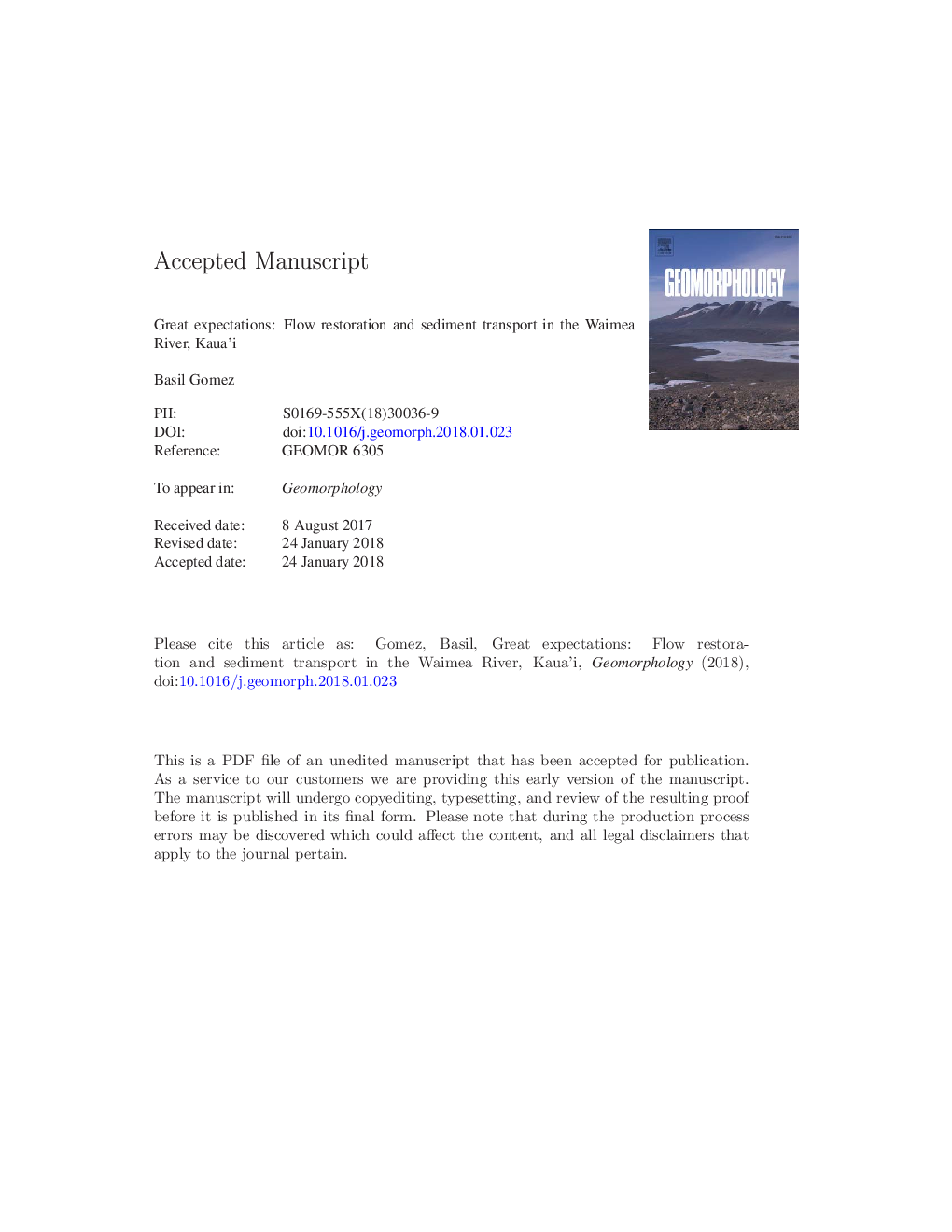| کد مقاله | کد نشریه | سال انتشار | مقاله انگلیسی | نسخه تمام متن |
|---|---|---|---|---|
| 8908137 | 1635344 | 2018 | 45 صفحه PDF | دانلود رایگان |
عنوان انگلیسی مقاله ISI
Great expectations: Flow restoration and sediment transport in the Waimea River, Kaua'i
دانلود مقاله + سفارش ترجمه
دانلود مقاله ISI انگلیسی
رایگان برای ایرانیان
کلمات کلیدی
موضوعات مرتبط
مهندسی و علوم پایه
علوم زمین و سیارات
فرآیندهای سطح زمین
پیش نمایش صفحه اول مقاله

چکیده انگلیسی
Conventional and novel observations made in the Waimea River basin between 1960 and 1995 permit the total riverine mass flux to be estimated and the influence that flow restoration will have on sediment dynamics in the river's lower reaches to be assessed. Flows between the threshold for sediment transport (~6.0â¯m3â¯sâ1) and the most effective flow (80.7â¯m3â¯sâ1) recur annually and transport ~60% of the Waimea River's suspended sediment load. Discharges of this magnitude essentially were unaffected by plantation era agricultural diversions of 2.3â¯Â±â¯0.7â¯m3â¯sâ1. The modern-day mass flux from the Waimea River basin is 155â¯Â±â¯38â¯tâ¯kmâ2â¯yâ1, and comparison with an independent cosmogenic nuclide-based estimate implies that it has remained at about this level for the past 10â¯ky. Previous work indicated that: (i) most of the sand the Waimea River transports to the coast is derived from steep, rapidly eroding, sparsely vegetated, bedrock-dominated hillslopes; and (ii) the sediment transport regime of the Waimea River is supply-limited at very high discharges (recurrence intervalâ¯>â¯2.5â¯years). Consequently, major floods tend to remove sand from the estuary. Climate change has caused a statewide decline in heavy rainfall, and a commensurate decline in the magnitude of peak flows in the basin's pristine, undiverted headwaters over the past 97â¯years. The effect this secular change in climate presently is having on streamflow was foreshadowed in the late 1970s by a naturally occurring, warm Pacific Decadal Oscillation phase reduction in the magnitude of flows with low exceedance probabilities. Additionally, the controlling base level at the river mouth has risen and been displaced seaward. Simple proportionality approximations show that, for a constant sediment supply, aggradation will occur if either the magnitude of flows with a low exceedance probability declines and/or base level rises. Thus, anthropogenic stresses on Waimea River's lower reaches are not derived from the within-basin influence agricultural diversions exert on the flow regime and will not be resolved by restoring flow to the river. These stresses primarily accrue from extrinsic factors that will continue to influence the river's hydrologic and sediment transport regimes until global, offsetting, climate-ameliorating measures are implemented.
ناشر
Database: Elsevier - ScienceDirect (ساینس دایرکت)
Journal: Geomorphology - Volume 306, 1 April 2018, Pages 254-263
Journal: Geomorphology - Volume 306, 1 April 2018, Pages 254-263
نویسندگان
Basil Gomez,